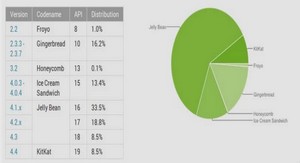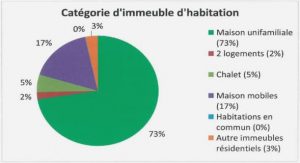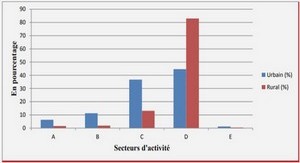Télécharger le fichier original (Mémoire de fin d’études)
Geological settings
The described elements were extracted from rock samples collected on an exotic block of marine, Lower Triassic limestone located in the Batain Plain, Eastern Oman (Fig. 2). The block, about 1.2 meters in diameter, contains abundant ammonoids and conodonts that are diag-nostic of the Induan-Olenekian boundary (IOB, or Dienerian-Smithian boundary). The in detail description of this block and of its paleontological content is beyond the scope of the present paper and will be the topic of another publication. Here we focus on those elements whose basal body is preserved. Those are found in the top half of the block and, based on the presence of Novispathodus waageni sensu lato, are considered to be early Olenekian (Smithian) in age.
The Batain Plain, located South of the city of Sur, Eastern Oman, extends over 4000km2 in the northeastern corner of Oman. The Batain nappes are represented by allochthonous Perm-ian to Maastrichtian marine sediments, as well as volcanic rocks and the Eastern Oman Ophi-olite Nappes, obducted onto the Oman continental margin at the Cretaceous/Tertiary boundary (Hauser et al., 2002). They consist of several units and formations, among which the Triassic Sal and the Jurassic Guwayza Formations. The conglomerate interbeds in the Guwayza For-mation contain reworked boulders of marine limestones from the Sal Formation of Early and Middle Triassic age (Hauser et al., 2002), of which the studied block is a typical example. These boulders are evidence for the partial destruction of the proximal Triassic Batain basin in Late Jurassic times (Hauser et al., 2002).
The studied outcrop is located about 20 km northwest of the Ad Daffah village, in the northern part of the Batain Plains (GPS coordinates: 22°22’18.5”N, 59°39’46.0”E, Fig. 2: A). The boulder was found about five meters away from the top of a small hill.
Figure 2: A: Location map of the studied material. The star indicates the Ad Daffah locality.
Methods
The conodonts were extracted using standard acid digestion techniques (Jeppsson et al., 1999). The discussed specimens are from four different but contiguous samples. For each sample, about one kilogram of rocks was dissolved in buffered ten percent acetic acid. The insoluble residues were then treated for concentration by heavy liquid separation using Sodi-um-Polytungstate (Jeppsson et al., 1999). The picking of the elements was done under a Motic binocular. The preservation of the specimens is pristine, with most denticles still intact, surfaces clean of debris and a color alteration index (CAI) of 1. Hence these elements were subjected to minimal post-depositional transport and minimal heating (Epstein et al., 1977). Pictures of the elements were taken at the University of Zurich using a Jeol JSM-6010 environmental SEM, without metallic coating, which enables easier distinction of the basal body.
Taxonomy
The described material corresponds to a very small portion of the abundant assemblag-es (several thousands of elements) that we retrieved. Elements of Novispathodus ex gr. waa-geni compose most of these assemblages. Elements of the genera Neospathodus? Wapitiodus, Guangxidella, Discretella, ‘Cornudina’, and Smithodus are also present, although much less frequent. This association is typical of the Smithian (early Olenekian).
For the crown part of the elements, the multielement diagnosis is as described by Or-chard (2005) and subsequently revised by Goudemand et al. (2012).
The M element is breviform digyrate (Fig. 5: a,b). One partly broken element has straight erect sharp denticles and a narrow angle between the two processes that is completely filled with basal body. The other element, likely from a different species than the latter element, possesses short discrete rounded denticles and a wide blunt angle between the two processes. A thin regular strip of basal body extends on the basal side along the processes, but it is unclear whether it is complete or not.
The alate S0 element bears two symmetrical antero-lateral processes branching from a point anterior to the cusp (Fig. 5: c). Basal body is visible on the basal side of the lateral processes. The basal body of the herein illustrated specimen seems to have been initially more extended.
The S1 element is weakly digyrate with one much shorter anterolateral process that bears one or two small denticles (Fig. 5: h-i, p-s). Some elements bear a nearly complete basal body that fills the basal cavity of the crown, and extends along the posterior process where it divides into two lips separated by a groove. In lateral view, the outline of the basal body is smooth and subparallel to the basal margin along the larger anterolateral process.
The breviform digyrate S2 element has two long curved anterolateral processes (which are broken in the illustrated specimens) (Fig. 5: d-g, l-o). The basal body fills the narrow, acute angled space under the basal cavity.
The S3-4 elements are bipennate elements (Fig. 5: w). The posterior process is attached but it may often be broken (as is the case in the illustrated specimens). The lower margin of the posterior process is usually sinuous. The basal body extends along the entire length of the process and its height seems to increase in the concave, posteriormost portion of the sinuous posterior process. The P2 angulate high-bladed elements have an anterior process twice as long as the posterior one (Fig. 5: t-v). The basal body is very reduced, forming a thin layer filling the space between the two processes. This results in a straight flat lower margin of the entire element in lateral view. Novispathodus waageni (Sweet, 1970)(Fig. 3, 4)
In lateral view, the P1 element presents a subquadrate form, with a laterally compressed blade, an arched crest composed by 7 to 14 slightly reclined denticles with a fan-like organi-zation. In his original description, Sweet (1970) notes that this variable species often presents a sensibly upturned basal margin in the posterior half of the elements. We observe what seems to be a morphological continuum between slightly and strongly upturned morphologies. In all variants the outline of the basal body mostly follows that of the lower margin of the crown, except at mid-length where it is U-shaped. It is not clear yet whether the variation on the shape of the U may correlate with any trait of the crown. The point where the basal body seems to disappear (in lateral view) within the crown is variable. Note however that the anterior part of the basal body is frequently broken. In aboral view, the lower surface of the basal body presents a slight depression at the position of the pit. There starts a groove that extends to the anterior end of the element, just as the groove of the crown.
Novispathodus aff. waageni (Fig. 4: b-f)
These short segminate P1 elements are most similar to those of N. waageni but they bear erect and less numerous denticles and the posterior denticles do not decline in height as smooth-ly as in N. waageni. The basal body is much reduced.
Figure 3: Novispathodus waageni. All P1 elements in lateral and aboral views. The basal body is highlighted in false yellow color. Scale bar 500 µm.
Figure 4: a, g-t: Novispathodus waageni. b-f: Novispathodus aff. waageni. All P1 elements in lateral and aboral views. The basal body is highlighted in false yellow color. Scale bar 500 µm.
Results
Remains of basal body are easily identified because they are white and opaque, while the crown part is usually creamy yellow and often translucid. They are very frequent although they consist in many cases of only small patches on the aboral side of the elements. Some much less frequent elements do exhibit basal bodies that we consider as complete, based on a super-ficial investigation of the surface smoothness and the apparent absence of breakage surfaces. This is particularly true for P elements, for which the basal body is also usually thicker, poten-tially explaining this differential preservation.
Presence of basal body in Novispathodus elements
The P elements of Novispathodus being the predominant form in these assemblages, it is likely that the frequent S and M elements found associated with them also belong pre-dominantly to Novispathodus. A comparison with the multi-element reconstruction of Orchard (2005), revised by Goudemand et al. (2012), confirms this hypothesis (see descriptions in the Taxonomy part below). All eight element types of the apparatus of Novispathodus are represented by at least one individual with at least partial basal body preservation (see Fig. 3, 4, 5, not all illustrated). This constitutes the first evidence of the presence of basal body in S or M elements younger than the Carboniferous, and hence the first evidence for the entire superfamily Gondolelloidea. The Gondolelloidea are the predominant conodont group from the mid-Permian to the end of the Triassic (Orchard, 2005). As mentioned above, besides Novispathodus, several genera belong-ing also to this superfamily are represented in the studied material and for most there exists at least a few individuals that show at least traces of basal body (not illustrated).
Extention of basal body in Gondolelloidea
Even in specimens where the basal body seems to be preserved completely, the basal body is much reduced compared to the crown. In most cases it barely extends beyond the mar-gin of the basal cavity. In S and M elements (Fig. 5) its extent is maximal under the basal cavity, in P elements (Fig. 3, 4) at element’s mid-length, just in front of the cavity. On the aboral side of processes of ramiform elements it is reduced to a thin layer.
Basal body morphology
In S and M elements (Fig. 5, 6, 7), the subconical basal body fills the basal cavity and, between any two processes, the smooth curve defined by its edges suggest a hyperbola whose asymptotes are the lower margins of the processes. In other words, if we consider the lower margin of the crown as the geometrical reference, the basal body has a smooth, concave outline that converges with the crown outline along the processes.
In P elements on the contrary, the basal body has a smooth, convex outline (Fig. 3, 4, 6, 7): in lateral view, it forms a broad parabola with maximum curvature facing aboraly. The base of the parabola is located at mid-length of the element and the sides recurved to align with the lower margin of the crown.
Discussion
Lack of basal body in post-Devonian conodonts is not the result of an evolutionary loss
Because the growth lamellae are continuous between the crown and the basal body (Müller and Nogami, 1971), it is thought that the basal body and the crown developed in con-cert. Yet, the apparent absence of basal body in many taxa (in particular, until today, in all Late Paleozoic and Triassic S and M conodont elements) had raised the question of whether this was due to a preservational bias, or reflected an actual evolutionary trend towards unmineralized basal bodies, and, in the latter case, how this could be explained developmentally (Donoghue, 1998).
During development of the vertebrate dermal skeleton, enamel secretion is induced by the presence of mineralized dentine (Smith 1992, Donoghue 1998). This ensures outward se-cretion and growth of the corresponding odontodes, the basic building blocks of the vertebrate
Figure 6: Published elements with subcomplete preservation of the basal body. a: Jumudontus gananda, P element. b: aff Microzarkodina sp., P element. c: Archeognathus primus?, P element. d: Omanognathus daiqaensis, S3 element. e: Ozarkodina? hemensis sp. nov., P2 element. f, g: Ozarkodina cf. cornidentata, P1 elements. h: Polygnathoides siluricus, P1 element. i: Polygnatoides siluricus, P2 element. j: Ozarkodina? hemensis , P1 element. k: Kockelella variabilis variabilis, P1 element. l: Arianagnathus jafariani, Sb1 dextral element. m: Oulodus elegans, ramiform elment. n: Ctenognathodus sp., S1-2 element. o: Polygnathus kennettensis, P1 element. p: Polygnathus linguiformis linguiformis, P1 element. q: Palmatolepis sp., P1 element. r :Polygnathus aff. trigonicus, P1 element. s,t: Oulodus angulatus, M element (t: en-larged view). u: Hibbardella angulata, Sa element. v,w: Hibbardella angulata, “N” element (w: enlarged view). x,y: Apatognathus varians klapperi, Sa element (y: enlarged view). z: Clarkina cf. bitteri, P1 element. aa: Mesogondolella nankingensis, P1 element. ab: Mesogondolella postserrata, P1 element. ac: Gondolella naviculla, P1 element in lateral and lower view. ad: Clarkina carinata, P1 element. ae: Novispathodus waageni, P1 element. a-d: Ordovician. e-n: Silurian. o-y: Devonian. z-ab: Permian. ac-ae: Triassic. False yellow color highlights the basal body. Scale bars 250 µm. Some scales were missing. Adapted from Pyle et al. 2003 (a), Miller et al. 2017 (b,d), Mosher and Bodenstein 1969 (c), Miller and Märss 1999 (e,j), Slavík and Carls 2012 (f,g), Slavík et al. 2010 ( h,i,k), Männik et al. 2013 (l,n), Jeppson 1969 (m), Savage 1976 (o), Sparling 1983 (p,r), Uyeno 1991 (q), Nicoll 1977 (s,t,u,v,w), Nicoll 1980 (x,y), Kozur 1992 (z), Kozur and Mostler 1995 (aa,ab), Nogami 1968 (ac), Orchard et al., 1994 (ad), Goel 1977 (ae). dermal skeleton (Ørvig, 1967). If an enamel-like tissue is secreted by the epithelial cells before mineralization of the underlying dentine-like tissue, as is the case with enameloid (Smith, 1995, 1992), we expect growth to occur in the opposite direction: inwards instead of outwards. As a consequence, unless at least a thin layer of basal body is mineralized at the crown-basal body junction in conodont elements, the observed enamel-like outward growth of the crown tissue can hardly be explained.
Indeed, although the ultrastructural evolution of early conodont elements seems to ex-clude an homology between lamellar crown tissue and enamel (Kemp, 2002; Kemp and Nicoll, 1996, 1995; Murdock et al., 2013; Reif, 2006; Schultze, 1996; Trotter et al., 2007), it is very likely that conodont elements developed in a way that is analogous, if not homologous to ver-tebrate odontodes. Odontodes are formed through epithelial-ectomesenchymal interaction, via formation of a placode, invagination of the corresponding volume of epithelium into the mesen-chyme, and subsequent mineralization at the epithelial-mesenchymal interface. (Smith, 1995) first attempted to homologize conodont elements with odontodes. Later, Donoghue (1998) who reviewed in details the growth and patterning of conodont elements, proposed instead that each conodont element may be homologous to an odontocomplex (or polyodontode), not to a sin-gle odontode. Since conodont’s crown tissue has apparently evolved independently of enamel (Murdock et al., 2013), it is not clear to what extent this putative homology may hold. Yet, a deep homology may actually exist, in terms of underlying processes, between these two organs.
Donoghue (1998) suggested that odontodes were “flexible enough to allow any of their component tissues (enamel, dentine, bone) […] to be present independently of the others” (1998, p. 658), which would have explained the absence of basal body in some conodont taxa. This statement may be true in general, but it seems that the biophysical, mineralization con-straint mentioned above excludes the possibility of independence between enamel and dentine, and likewise between an enamel-like tissue and its dentine-like counterpart, in outward grow-ing odontodes (or odontode-like organs), such as conodont elements.
Consequently the apparent absence of mineralized basal body in Late Paleozoic and Triassic conodonts was intriguing and one could have argued that conodont elements (of that age at least) must have developed in a way that is fundamentally different from that of any other known vertebrate odontode. Although the main evidence for a vertebrate affinity of conodonts is based on the soft tissues homology and does not rest on a putative homology of their feeding elements with those of other vertebrates (Aldridge et al., 1993; Blieck et al., 2010; Donoghue et al., 2000; Donoghue and Rücklin, 2016; Janvier, 2015; Krejsa et al., 1990; Murdock et al., 2013; Purnell, 1995; Purnell et al., 1995; Sansom et al., 1992; Turner et al., 2010), this may have even been used to suggest that conodonts are not vertebrates. Based on the evidence pre-sented here, and as far as we currently know, Novispathodus elements, and possibly all cono-donts elements, still do conform to the development of vertebrate odontodes.
Table des matières
Introduction
Chapitre 1 : Le corps basal, découverte récente et nouvelles perspectives
– Article publié dans Palaeogeography, Palaeoclimatology, Palaeoecology
Chapitre 2: Conodontes, morphométrie et forces évolutives
1 – Croissance et analyse quantitative de la forme des conodontes
2- Déterminer les forces évolutives en présence
Chapitre 3: Impact de l’environnement et du développement sur l’évolution d’un assemblage d’éléments conodontes du Trias
– Article accepté dans Paleobiology
Chapitre 4 :Forces évolutives et morphologie des conodonts: impact de l’environnement et des contraintes développementales
– Article en préparation
Chapitre 5: Utiliser la morphométrie géométrique et l’analyse de clusters pour démêler la taxonomie des neogondolellides du Griesbachien.
– Article en préparation
Conclusion et perspectives



